Ultimate guide to dog walking
4th March, 2022
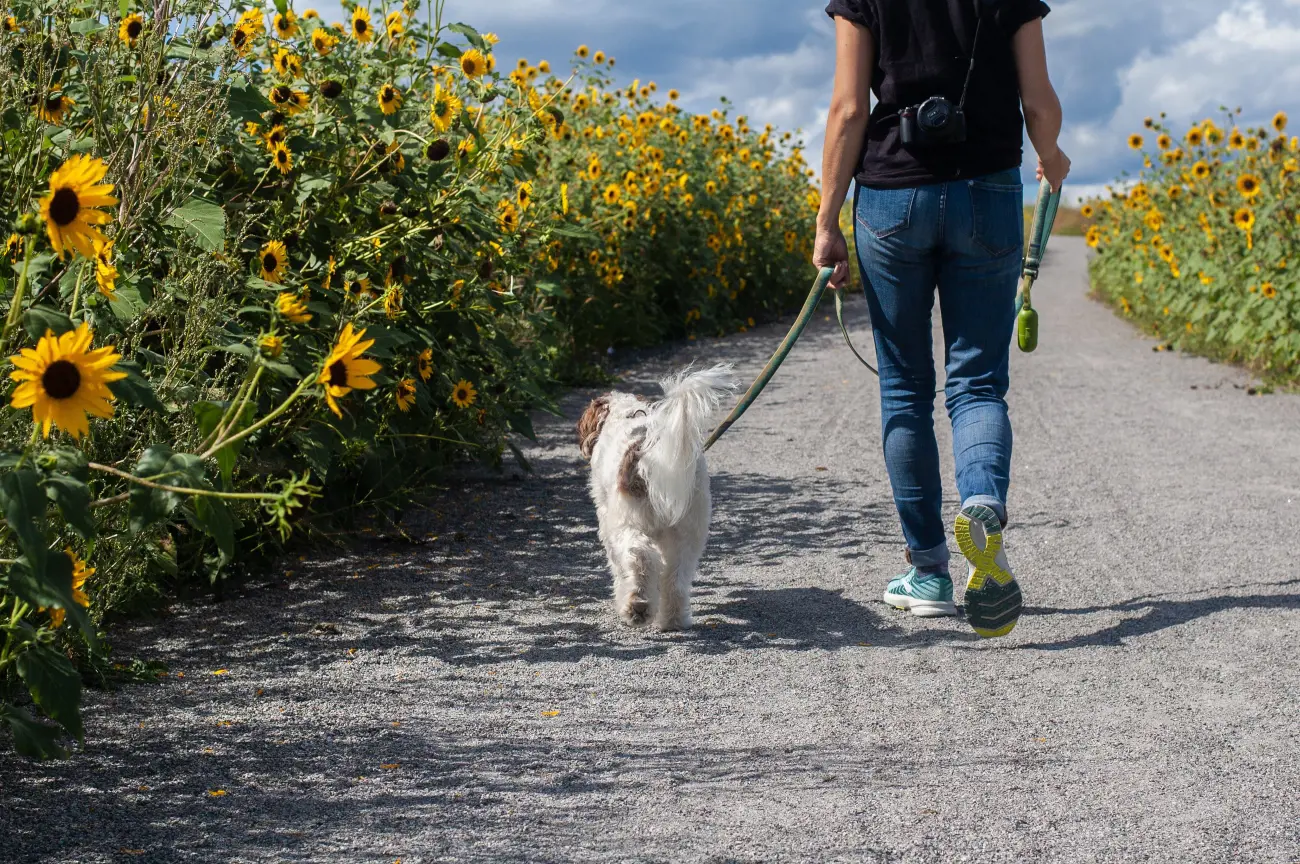
As a dog owner, you will quickly become familiar with the routine of dog walking. Every dog, no matter their breed or age, needs at least one walk a day – and some need much more than that.
What's more, the daily walkies can be a fun time of bonding and companionship for you and your pet, as you enjoy the sights and sounds of the outside world, and the sheer pleasure of exercise, together.
If your household includes children, the chances are that they will enjoy dog walking time, too, as this is often when your beloved pup is at their most playful and adventurous.
Following a few simple guidelines – from what to do around livestock to what sort of lead might work best – can ensure that walk time is always a fun time of day, for both you and your pup. So here is our ultimate guide to successful dog walking.
Wherever you and your dog are heading, make sure you have some suitable pet insurance in place.
The vast majority of walks will pass without incident, but if ever your dog gets involved in a difficult situation or sustains an injury while you’re out and about, you’ll need pet insurance to help with the cost of treatment.
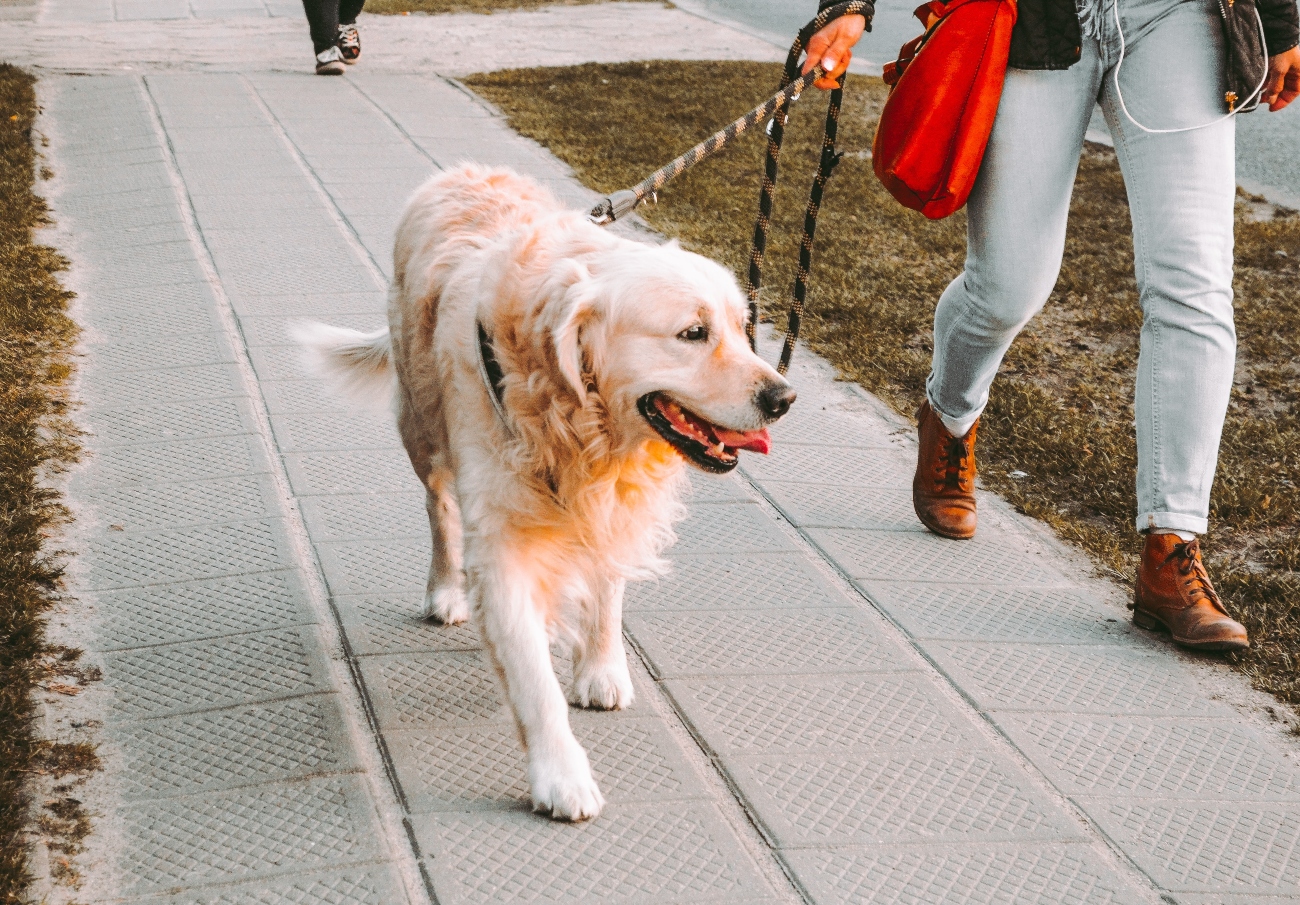
Dog walks: what do you need to take with you?
Aside from the obvious – the lead, which we'll get into below – you should take a few essentials along on any dog walk. These include food, treats, water and, if your dog needs them on a walk, toys.
In particular, snacks and treats, as well as satisfying hunger pangs caused by exercise, may serve as a useful distraction if your dog is suddenly desperate to chase a squirrel – or give another dog unwanted attention.
You should also bring along some bags to pick up your dog's poop.
Lastly, a bum bag can be useful, allowing you to shove away all those key items such as phone and keys, and leaving your hands free for the lead and the other items above that your canine will require during the walk.
And, if we're running through a checklist of essential items, we'd best include some pet insurance. This won't be something to bring along on the walk with you, but it is, in its way, as essential as a good lead and some water.
How do you choose a good lead?
So we move onto the lead, the single most essential item on most dog walks. But what makes a good lead?
Leads should, essentially, do two things well. They should give you control over your dog, and they should be comfortable for the dog to wear.
As such, it's important you get the correct lead or harness from the outset. A suitable lead will be well-fitted, secure, and comfortable for your walking companion.
And how long should the lead be? Well, as a rule of thumb, a good lead might be around 6 feet long.
You may then want to tie as many as three knots along the length of the lead – these can serve as gripping points if your dog pulls away from you, and they can also help maintain a proper social distance from any passers-by.
You do have the option of a waist lead – by affixing to your waist, this leaves both your hands free to do whatever else you need to do.
Beware, though, that these are probably only suitable for certain well-trained dogs. Any dog given to more unpredictable behaviour might pull suddenly on the lead, causing you to fall and injure yourself.
And what about a retractable lead – one that you can extend or reel in. Again, these can be really useful but only in certain situations.
They are suitable in parks, on beaches or in the great outdoors, where it's OK to let your dog run reasonably free (we'll get onto the areas where you can go 'off lead' in a moment).
If you're going for walkies on city streets, however, they may prove to be more stress than benefit. A dog on a long lead is not under much control – and there is always the risk of the lead malfunctioning and not retracting quickly enough when you need to withdraw your dog from a potentially dangerous situation.
If the worst does happen and your dog gets involved in a confrontation, or runs into traffic, you should be able to count on your pet insurance for some financial assistance with the treatment of any injuries.
Far better, however, to avoid any painful situations like this in the first place.
Collar or harness?
After this, you have the choice of how the lead is actually attached to your dog. The options here are either via a collar around their neck – or with a harness, which fits around the chest, shoulders and upper back.
Many experts and dog lovers alike will tell you that the harness is the better option. Collars can be quite uncomfortable for your dog: all that pressure on the neck, after all, can't be enjoyable.
Moreover, if a dog does start pulling hard on the lead, there is the risk of choking. Or what if they were to leap off a bridge or other high point, and were left dangling by their neck?
When it comes to harnesses, you have a wide range to choose from. Some so-called 'no-pull' harnesses, for example, are especially suitable for dogs who like to pull on the lead, as they reduce that particular behaviour.
Generally, a lead that attaches at the back of a dog's shoulders will reinforce the pulling habit, while those attached at the front will discourage it.
These front-clip or no-pull harnesses will be especially useful for very strong dogs – and for training puppies, who are still full of energy and mischief and typically need a little extra control.
Other harnesses feature handles, which make for an easy way to grab and hold your pet if they ever run into trouble or become over-excited.
Whatever harness you use, make sure it’s not pinching your dog anywhere. Run your fingers underneath to make sure it’s not too tight.
Once again, remember that some suitable pet insurance will be something you will be thankful for, should any difficult or harmful situations ever arise.
How should you use the lead?
First of all, you need to prepare your dog to wear a lead. Use plenty of rewards and praise during the first few sessions with the lead, and you will create some positive associations. Use a treat to reinforce good behaviour and encourage them to stand still as you fit the harness.
When it comes to using the lead while out and about, the general principle is to walk on a loose lead. However, whenever the lead goes tense – because your dog is pulling on it – you should quickly stop walking.
Your dog will soon learn that they only get to move forward when the lead is loose, and that pulling on the lead gets them nowhere.
Other than that, it's important to be consistent with your lead behaviour – and to always take charge. The more control you have, the more enjoyable your walks will be – for both of you.
You must also, by law, ensure that your dog wears an identity tag with your contact details on it.
The Kennel Club's online shop is a good place to buy tags and get them engraved with your details. Your dog should also be microchipped so they can be identified if they do go walkies without you!
Can you let your dog off the lead?
Sometimes your dog will crave some time off the lead. Your furry friend will be itching to get around and explore – to go wherever their nose takes them, rather than that long thing attached to you. But where and when, exactly, are you allowed to go 'off lead'?
As a general rule, you are allowed to walk your dog off lead in most woodland areas and parks here in Britain. If you are in a park or woodland, just look out for any signs detailing restrictions for dog walkers. If you don't see signs like these, you're probably allowed to ditch the lead.
There are, however, certain places where off-lead walking is clearly illegal. For reasons that are probably obvious, dogs are not allowed to walk without a lead near roads, car parks, play areas, cemeteries, and also certain water features such as streams or ponds.
Note, also, that there will be certain places where dogs are not allowed, even when they are on the lead.
These doggie no-go zones include municipal flower beds, plus certain parks, sports pitches, beaches, nature reserves, and children's play areas. Once again, keep your eye out for signs detailing any restrictions.
Also be aware that rules for dogs may vary according to the time of year – they may not be allowed on certain beaches when they are at their busiest during the summer months, for example.
Certain ponds and streams and other wildlife-rich areas may also be out of bounds at certain times of the year, in this case to protect the nesting birds and animals.
If you’re going to let your dog off the lead, their recall must be up to the task. You’ll need some clear commands for making your dog come back to your side immediately, to stop what they’re doing, and to drop any objects they’ve picked up.
Make sure you’ve got these commands down before you let them roam free.
How to find great off-lead walking spots near you
In need of some location inspiration? Check out these top sites and find a perfect place to walk your dog off lead.
- Walkiees
This is a brilliant website where dog walkers upload details of their favourite local walks. You can search for walks near you by entering your town or postcode in the Search field. Then, on each individual walk, you can check whether it has on-lead areas, off-lead areas, or both. Note that restrictions can change, so it's always worth checking the rules when you get to the location itself. - The National Trust
This nationwide heritage conservation body welcomes dogs on many of its sites, from the gardens and grounds of stately homes to more extensive areas of open countryside. This useful page on their website helps you to search for suitable walking areas near you. In a nutshell, the guidance from the Trust is to keep your dog in sight and use a lead where signs request. Look out for any signage instructing you to use a lead, and use the dedicated dog bins to dispose of any dog poop.
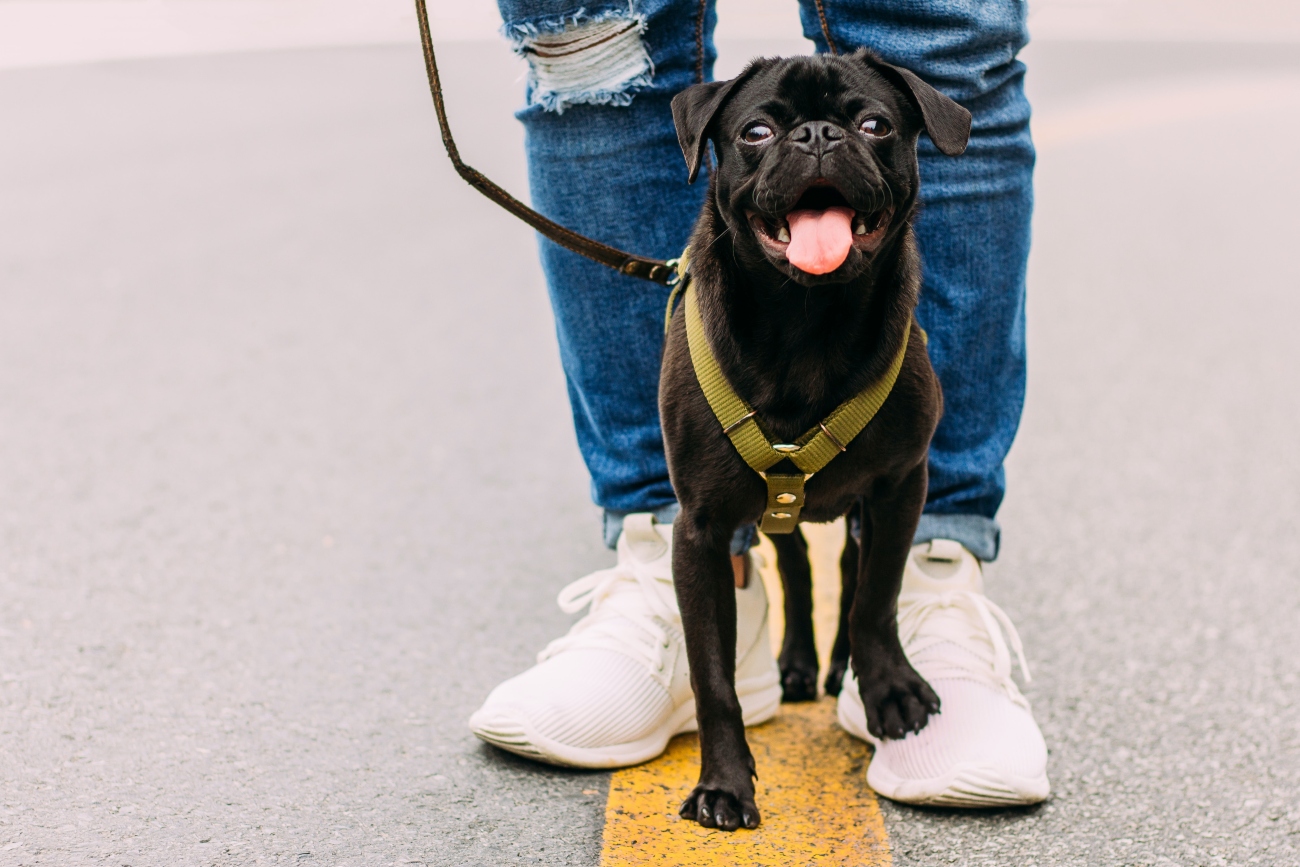
There are a few other factors to think about when choosing dog walking routes. For example, you should avoid walking your dog on hot surfaces, such as tarmac in summer. The pads of dogs' feet are sensitive to the heat, so if the ground is uncomfortable for you to touch, it will certainly not be good for your pooch.
Beyond this, you can be guided by what sorts of terrains and features your dog seems to enjoy. Some dogs will relish exploring brand new places.
Others may be hesitant in certain new environments. Always remember to match the location and the intensity of the walk with your dog’s age and physical ability.
Look out for signs that your dog is not comfortable – hesitation, slowing down, a tail tucked down between the legs rather than a wide, high wag. If they show any of these signs, think about changing your route.
How much exercise does your dog need?
The amount of exercise your dog requires will depend on their breed, age and general state of health.
As a very broad rule of thumb, you'll probably want to get your dog outside for a spot of exercise between once and four times a day – but these sessions can include everything from a long walk, via shorter bursts, right down to popping out for toilet time.
You can check the Kennel Club's A-Z of breeds to find out how much daily exercise your dog breed requires.
If you're the proud and happy owner of a puppy, remember that they will need much less exercise than their grown-up counterparts. Over-exerting a growing puppy is not a good idea.
For one thing, they can quickly become overtired: more serious, though, is the risk of damaging those growing joints, and bringing on early arthritis.
By the way, if you're ever concerned about your dog developing this condition, you might want to have a read of our helpful feature, 'how do I know if my dog has arthritis?’
Alongside this, if you decide to take out pet insurance with us here at Purely Pets, you will have access to our 24-Hour Vet Helpline, where you can call our dedicated team of veterinary nurses any time you have a health concern about your dog.
So how much exercise can you give a puppy? Well, dog experts often recommend five minutes' exercise per month of age, up to twice a day, until the puppy is fully grown.
So, for example, a three-month old puppy should exercise in 15-minute sessions, once or twice a day. Once the puppy grows to five months, those sessions can be extended to 25 minutes, and so on.
When they are fully grown, you can follow the normal, breed-specific exercise schedules as recommended on the Kennel Club link above.
Before heading out on walks, make sure your puppy is properly trained and will return to you when you call their name. We've got more advice on those first few weeks in our article, Top tips for socialising your puppy.
By the way, whatever your dog's particular exercise requirements may be, it is essential that all dogs, from puppies upwards to older dogs, get out for some daily exercise.
There is no upper age limit on exercise for dogs. And here at Purely Pets, we place no upper age limit on dogs when it comes to providing pet insurance.
What’s the best time of day to walk my dog?
So when should you be heading out for these walks? Once again, this question has some variables – but, for instance, during spring and summer you should try and get out during the morning or evening, to avoid the heat of the sun during the middle of the day.
Bring a bottle of water to keep your furry companion hydrated, and take frequent breaks. After all, we humans have our body temperature set a few degrees lower than our canine friends, plus they've got that full suit of fur.
Exercise can obviously seem a slightly less attractive option during the winter months – but your dog will still need to exert themselves and get a change of scenery.
Have a read of our article on 7 ways to exercise your dog in winter if you're in need of inspiration for getting up and out during the chilly season.
Other guidelines include not exercising your dog straight after food, as racing around on a full stomach can contribute to bloat.
Distractions and discipline
Walkies are bound to be an exciting time for your dog, and the distractions – strange smells, other dogs, a squirrel darting into the undergrowth – will be numerous.
Given all this stimulus, it's important to have a strong scheme of discipline, and to make sure that your dog knows when they must stop what they are doing and come back to you.
Firstly and perhaps most obviously, make sure your dog returns to your side whenever you call their name. This type of training is best mastered when the dog is still a puppy.
Certain breeds will have a higher prey drive than others – the instinct to chase anything moving quickly. Breeds particularly given to setting off in hot pursuit like this include Collies, Lurchers, Whippets and Greyhounds, and Terriers.
This page of the Hills Pet website has some useful information on recognising and managing your dog's high prey drive: essentially, though, you can train and discipline your dog to respond to your commands, and to come to heel when called.
You can reinforce this training with treats, praise and affection whenever they come back. You can also train them to look at you every time they see something interesting, and to effectively get your permission before rushing off into the bushes.
When it comes to walks in the countryside, livestock are bound to become a feature of many of your dog walks. And, when walking near livestock, you must keep your dog under control at all times. This is both a legal requirement, and essential for a calm walk without incidents.
If you do see farm animals, or think you may meet them on your walk, you should keep your dog on a short lead. Don't pass between, or separate, adult cows or sheep from their young. If these animals believe that their young are under threat, they may respond aggressively.
After your dog has behaved calmly around livestock, reward them in order to reinforce this good behaviour. We've got more tips on how to keep your dog safe around livestock elsewhere on our blog.
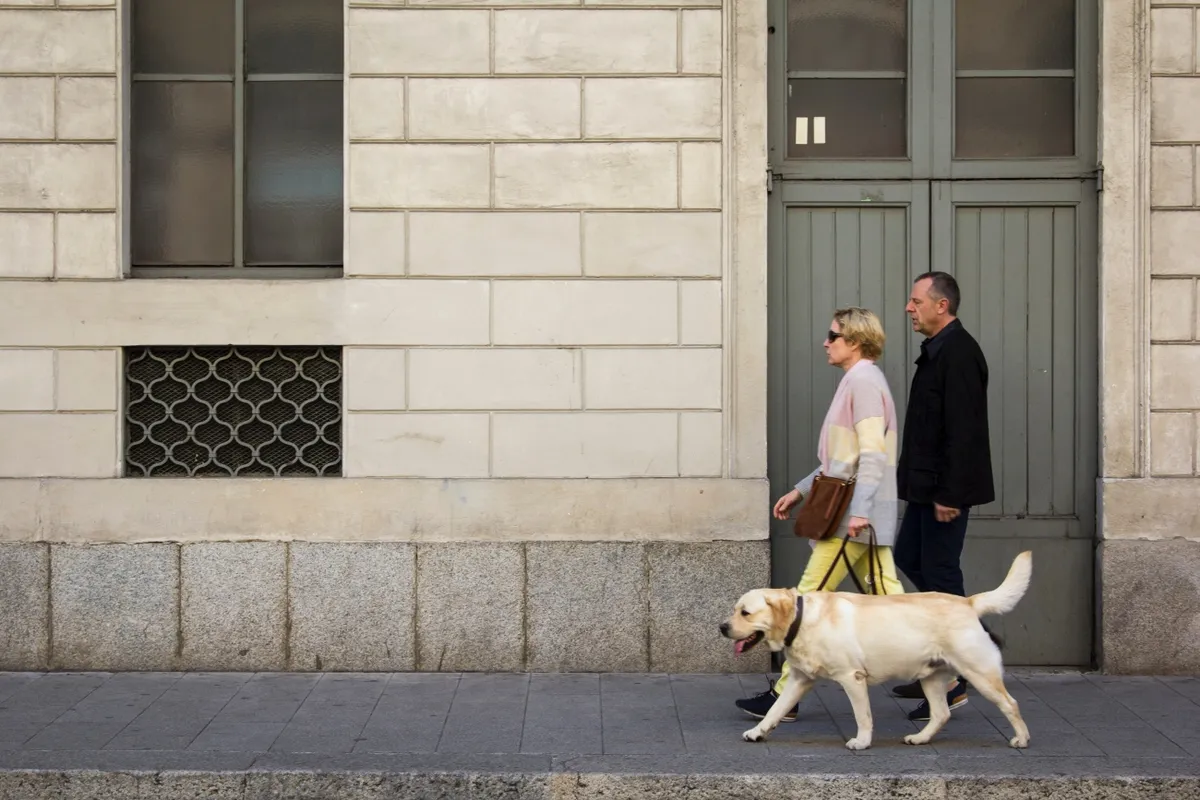
Pet insurance: with you and your dog, every step of the way
You and your dog will spend many happy hours together, enjoying the great outdoors. Make sure that, whatever adventures you both stumble into, you are protected with some good pet insurance.
Insuring through us can include the following benefits:
- No upper age limit
- Unlimited access to 24-Hour Vet Helpline
- 15 levels of lifetime cover
- Online policy management portal
Why not get a quote for pet insurance today?
Helpful Pages
Recent Posts

How to care for your pet in winter
26/11/25
60 tips for travelling with pets
26/11/25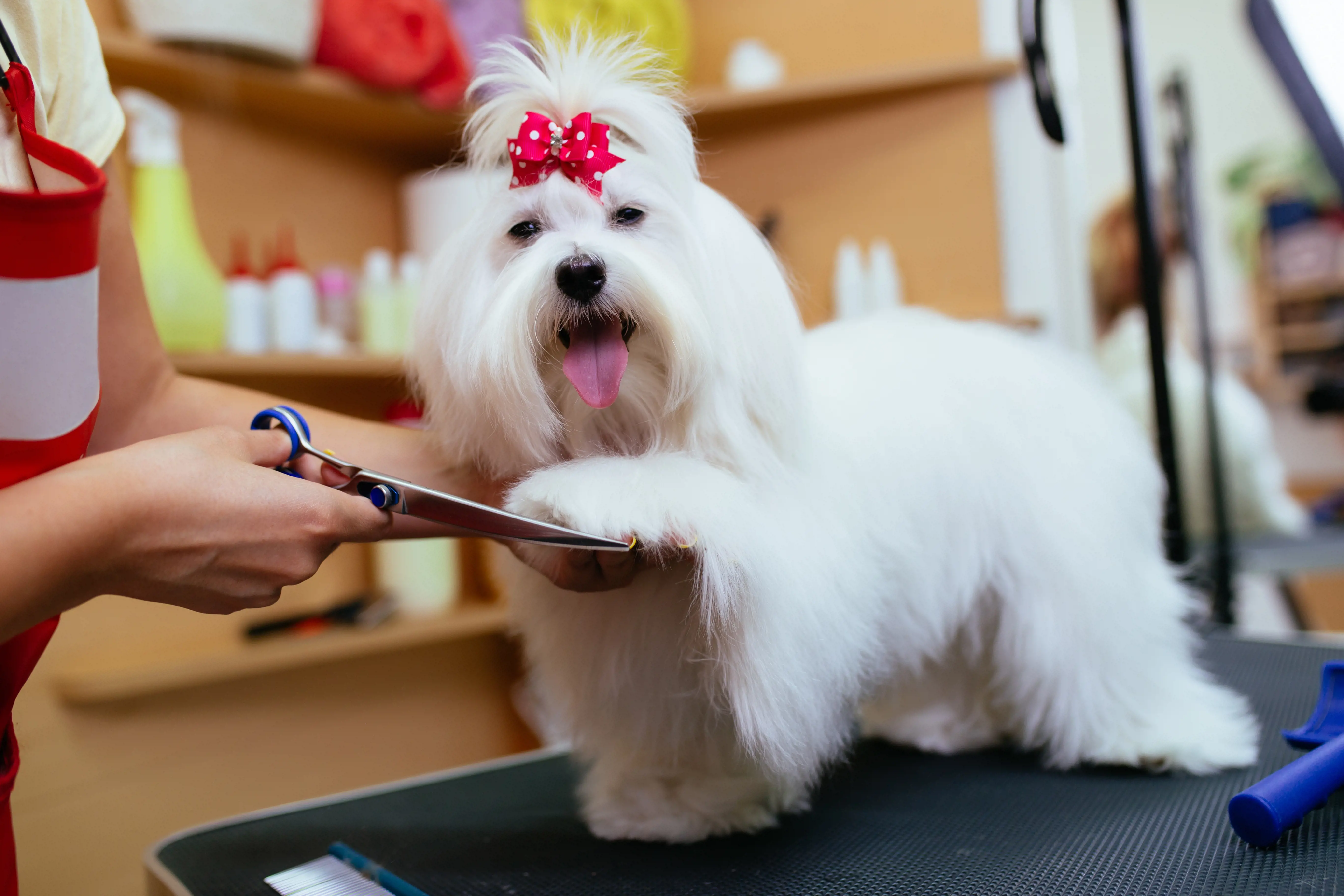
How to groom a dog at home
26/11/25Pet Insurance Quote
- 98% claims paid *
- Claims paid directly to vets
- 24/7 vet video consultations
- Interest free monthly payments

